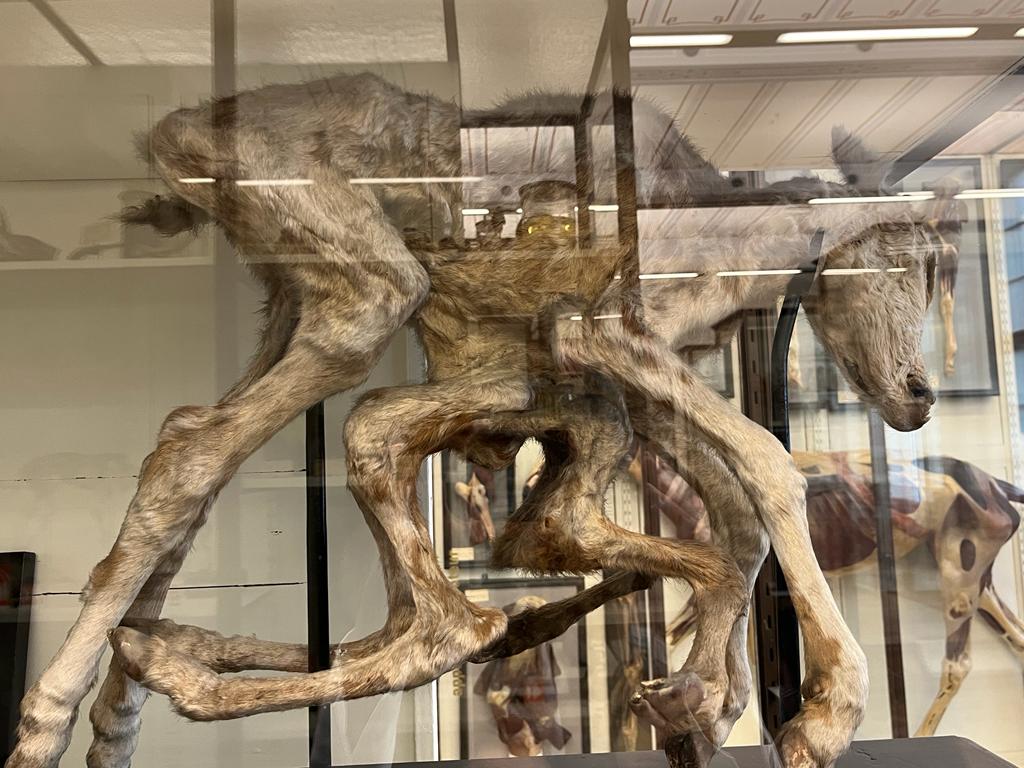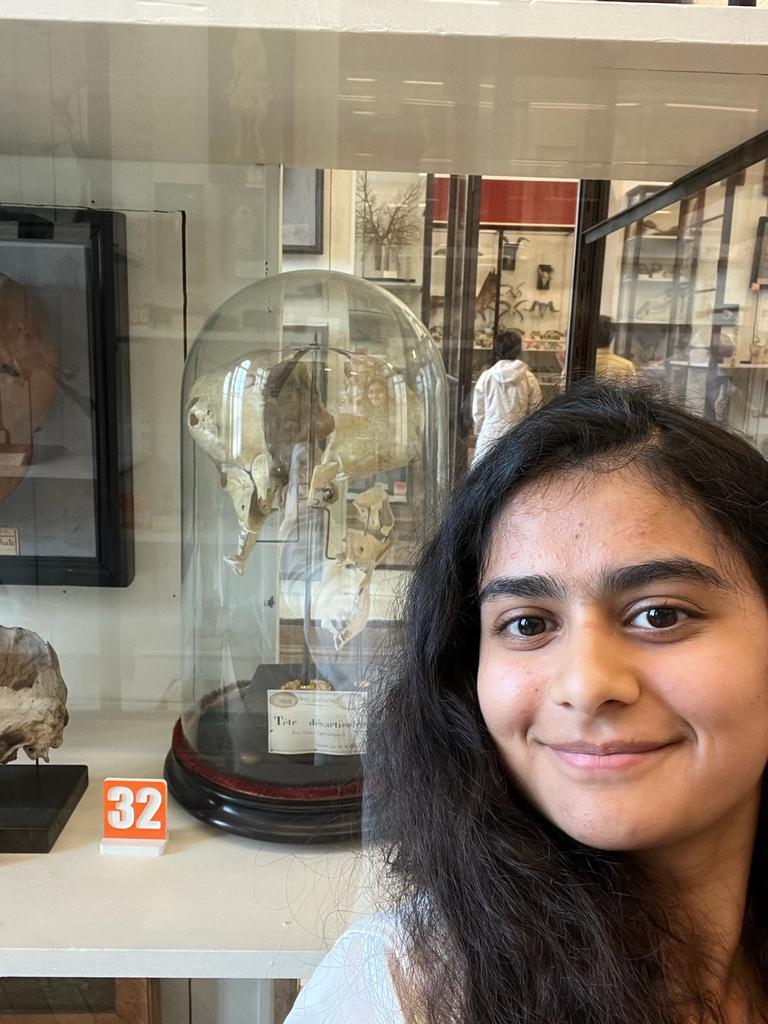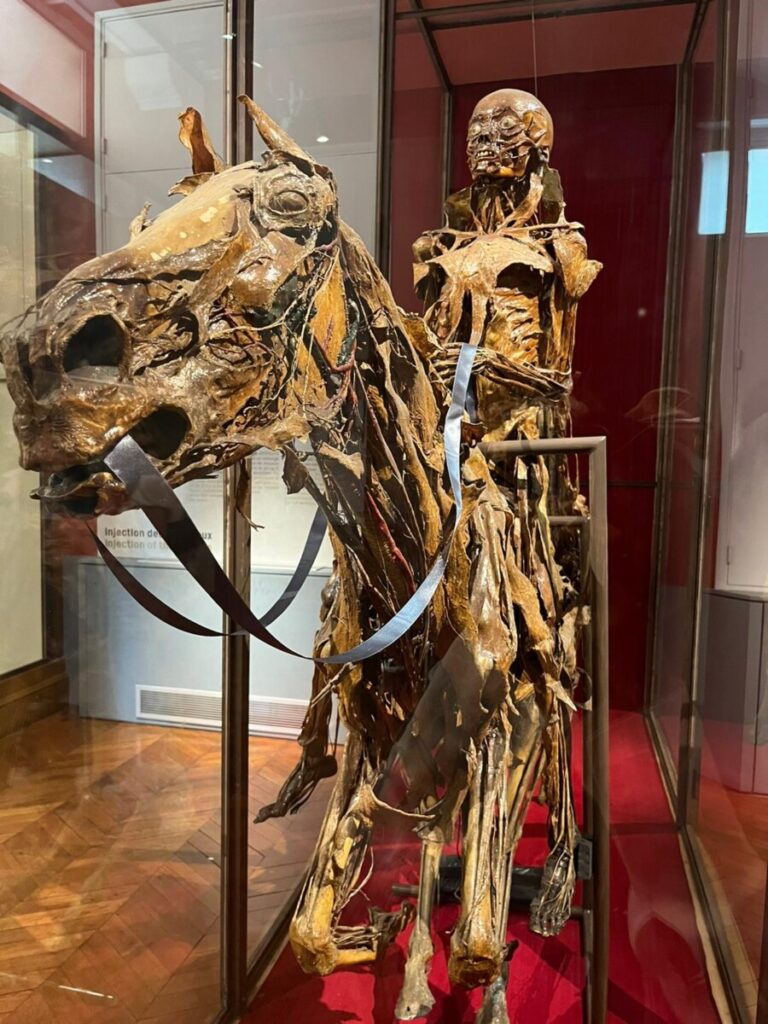The most unique class visit I experienced was to the Fragonard Museum in Paris on May 23, 2022. The museum boasted a unique display of “curiosities” with collections ranging from cow intestines to large shelves of bones arranged by age. Walking up to the museum was exciting for many of us, although it turned into a stomach-churning experience for some. During the visit, I found the most interesting museum displays of illnesses and/or deformities that were considered “mythical” for a major part of history but are treatable or can no longer be seen today with the drastic advance in veterinary medicine.

Deformed animals, born of various birth complications were commonly considered “monsters” in various historical mythologies.
As narrated by our tour guide, a student at the veterinary school, we owe it to Claude Bourgelat for establishing the first-ever veterinary school in Lyon in 1761. The École national vétérinaire d’Alfort was first established in 1765 in the center of Paris and later shifted to the outskirts of Paris in 1766.
The Fragonard museum hosted by the veterinary college explains the importance of museums such as this for learning the history and evolution of veterinary studies. The founder of the school opened the first-ever veterinary school in the center of Paris which later was moved to the outskirts because Paris “distracted” the students. Something that struck me in the tour was how quickly veterinary medicine gained importance, especially concerning pets, farm animals, and/or animals used for sport. One such “ancient” illness we witnessed was one that causes a buildup in brain pressure disarticulating the skull. The display “Tête désarticulé ” shows how the brain would separate before medical interventions were invented. This specific medical complication is ancient because today in the advancing field of medicine, neuroscientists have found effective ways to avoid this even in just-born infants! (Patel et al. 2013)

The display shows the complication that splits the cranial bone due to the swelling of the brain.
Despite these astounding displays, the most bizarre part of the museum was the “slayed” men or skinned men of the museum. In the finale of the museum tour, we witnessed a room of disturbing yet curious anatomical oddities of authentic-skinned men, horses, heads, and even babies. These were created by Honoré Fragonard in the late 1700s. Although the atrocities of this display may be considered unethical today in many countries, these have paved methods of dissection and preservation more accurately than known before. Some students and I discussed with our professors at the end that the ethical issues of whose bodies were on display and where they came from still concern me.

Created in the late 1700s. Professor Fragonard was kicked out of the college for these “bizarre” experiments yet he did introduce a much cleaner way to dissect. Essentially mummification!
Learning and experiencing this museum is a must for all who visit Paris. Regardless of the icky factor of the museum displays, I had the most fantastic day in a museum I have ever had!
References:
Fourman, S., Buesing, D., Girvin, S., Nashawi, H., & Ulrich-Lai, Y. M. (2021). Limited cheese intake reduces HPA axis and behavioral stress responses in male rats. Physiology & Behavior, 242, 113614. https://doi.org/10.1016/j.physbeh.2021.113614
